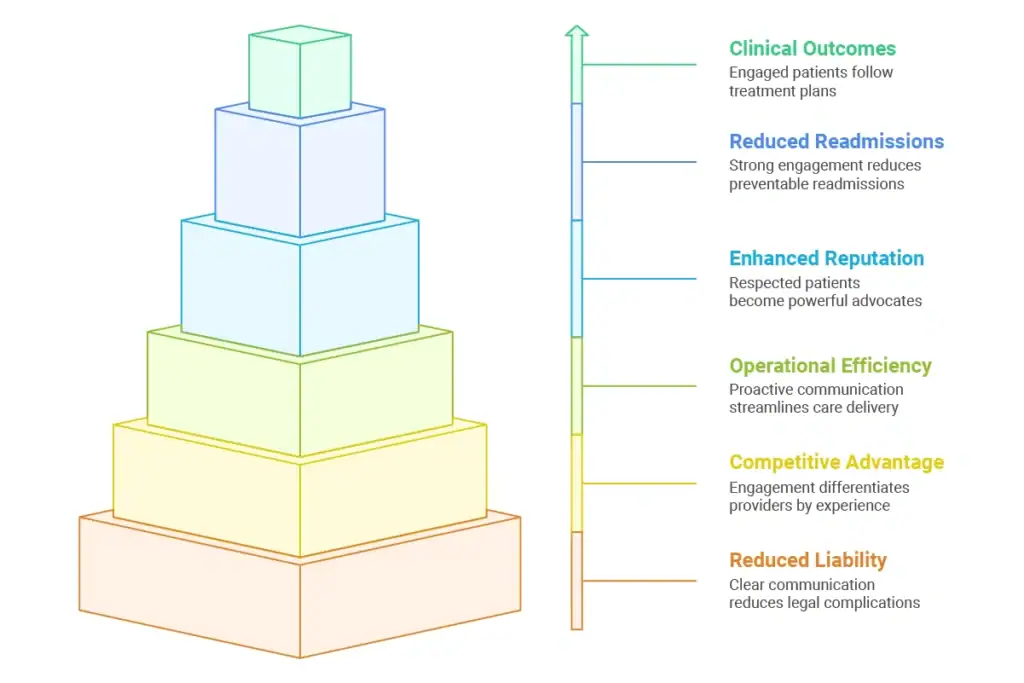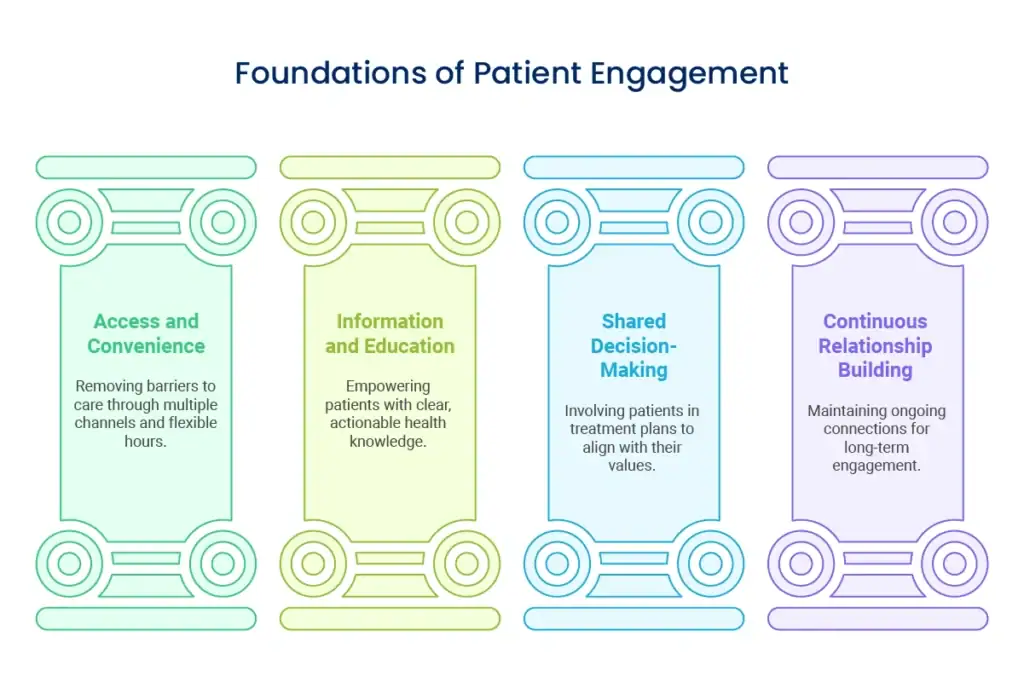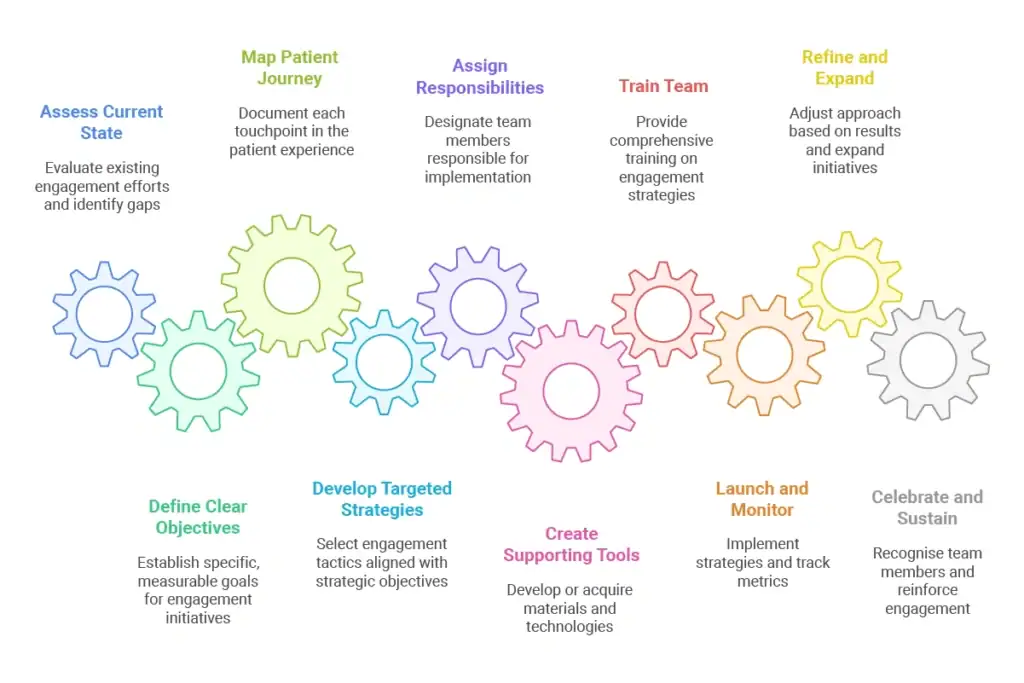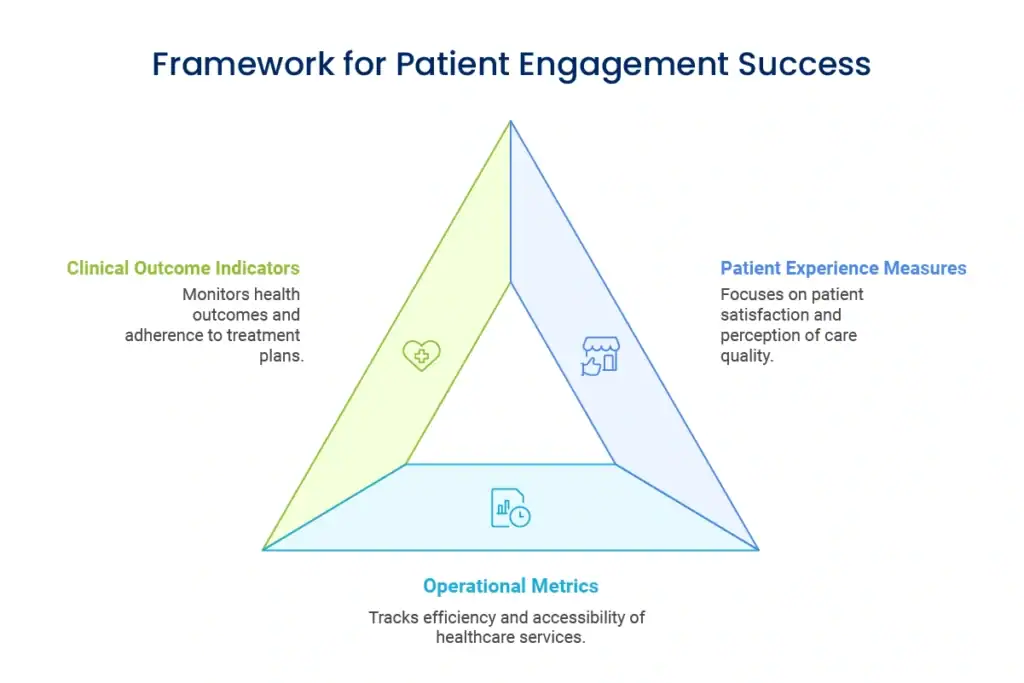Custom Design
Patient engagement starts with a single question: Are your patients active participants in their own healthcare journey, or passive recipients of care? Patient engagement focused healthcare providers experience remarkable gains in outcomes, satisfaction, and loyalty. With increasing expectations and transforming healthcare models, creating built-in communication channels has become critical for clinical success.
This in-depth framework will provide you with actionable strategies for forming substantial connections with your patients. We will discuss the building blocks of successful patient engagement, communication skills that build patient relationships, and how to put in place a system that is effective for your particular practice setting.


Patient engagement is the active partnership of patients and healthcare providers along the care continuum. It is a two-way relationship in which patients are empowered with education, technology, and assistance to be informed about their health and make educated decisions.
Essentially, patient engagement includes:
For clinicians, effective patient engagement isn’t merely a matter of enhancing satisfaction rates—it has a direct effect on clinical results, reduces readmissions, and yields sustained practice development.

When patients are valued and engaged in their treatment, the healthcare experience shifts from transactional to relational. With this shift come quantifiable rewards for your practice:
Engaged patients are 2.5 times more likely to adhere to treatment plans and preventive care guidelines.
Healthcare systems with robust engagement programmes experience up to 45% fewer avoidable readmissions.
Heard and respected patients become strong advocates for your practice.
Effective communication minimizes no-shows, enhances prep for procedures, and simplifies care delivery.
As patients increasingly select healthcare providers on experience in addition to proximity, interaction becomes a differentiator.
Effective communication minimizes misunderstandings that may result in dissatisfaction or legal issues.
By creating strong patient engagement systems, you’re not only enhancing one-on-one interactions—you’re making your overall healthcare brand even more competitive in a rapidly changing marketplace.
Constructing a successful patient engagement strategy involves paying attention to four interrelated pillars. Each element supports the others, building an overall approach tailored to various patient needs.

The groundwork for patient engagement starts with breaking down barriers to care. Patients today expect healthcare encounters to fit around their hectic lifestyles.
Essential elements include:
By making your practice more convenient, you send a strong message about respecting patients’ time and eliminating barriers to care.
Active patients require understandable, actionable information to be engaged in their care. This pillar emphasizes educating patients with knowledge.
Good practices are:
When developing educational materials, take into account the health literacy levels, language, and learning style preferences (visual, audio, written) of your patient group.
Authentic engagement means providing patients with a voice in their care plans. This pillar turns the old provider-patient model into a partnership.
The essential elements are:
Through shared decision-making, you show respect for patients’ autonomy while ensuring trea
Patient activation goes beyond one-time interactions. This pillar is about building persistent relationships that cover the whole patient journey.
Successful approaches are:
By having connection points along the way, you establish trusting relationships that promote long-term involvement.

Implementing a comprehensive patient engagement framework requires thoughtful planning and execution. Follow these steps to create a system tailored to your practice:
Begin by evaluating your existing engagement efforts. Survey patients about their experiences, review communication processes, and identify gaps between current and desired states.
Create measurable, specific goals for your patient engagement efforts. These could be to enhance satisfaction ratings, decrease no-shows, or grow portal registration rates.
Write down each interaction in your patients' journey, from contact to ongoing treatment. Mark key points where better engagement could have a major impact on outcomes.
Based on your evaluation, choose specific patient engagement strategies related to the four pillars. Give priority to activities that tackle your most crucial gaps and support your strategic goals.
Assign team members for carrying out each element of your engagement strategy. Make sure that they have sufficient time, training, and resources for success.
Build or obtain the materials, technologies, and protocols required to facilitate your engagement activities. These could be communication templates, decision-making aids, or education resources.
Implement your engagement initiatives, thoughtfully monitoring metrics associated with your goals. Employ quantitative data as well as qualitative feedback in assessing effectiveness.
Offer extensive training on engagement tactics, communication skills, and supporting technologies. Highlight the need for consistent use by all members of your team.
As initial results dictate, modify your strategy as necessary. After initial strategies yield success, incrementally scale your patient engagement initiatives to tackle more parts of the patient experience.
Identify team members who demonstrate outstanding patient engagement, exchange success stories, and regularly reinforce the relationship between engagement and your practice mission.

While technology in and of itself does not generate engagement, the appropriate digital solutions can greatly improve your capacity to engage with patients. Use these tools as you develop your engagement infrastructure:
Today’s portal technology has secure messaging, scheduling, prescription refill requests, and test result access. Choose systems that:
These solutions support connection without overwhelming staff. Good systems can:
For patients with ongoing conditions, remote monitoring creates touchpoints for engagement between appointments. Look at solutions that:
When selecting technology for patient engagement, always consider solutions that augment instead of replacing human connection, adapt to different levels of technical expertise, and fit into current workflows.

Meaningful patient engagement involves continuous measurement and adaptation. Develop metrics within these critical domains:
Build a dashboard that monitors these measures on a regular basis, with targets and accountability for improvement. Share with your team to reinforce the link between engagement efforts and real results.
At the center of effective patient engagement are good communications. These evidence-based strategies have the potential to change patient interactions:

By using these methods consistently, you establish a climate in which patients value, are understood, and are empowered to be an active participant in their care.
As healthcare becomes more advanced, patient engagement will only continue to take on greater significance. Practices that establish robust engagement models now will be well suited to thrive in a rapidly consumerized healthcare landscape.
The most successful engagement strategies walk the line between high-tech solutions and high-touch approaches. While technology enables new opportunities for connection, the bedrock is still genuine human relationships underpinned by trust, respect, and sincere care.
By implementing the four-pillar framework—access and convenience, information and education, shared decision-making, and continuous relationship building—you create a healthcare experience that truly puts patients at the centre. This approach not only improves outcomes but also transforms your practice into a true healthcare partner rather than simply a service provider.
Creating an end-to-end patient engagement infrastructure demands both strategic insight and implementation expertise. Whether you need to improve your practice’s patient engagement and communication strategy, guidance from experts will assist in formulating specialized solutions that meet your specific requirements and objectives.
Our staff specializes in developing customised communication strategies and brand positioning strategies that resonate with your unique patient base while enhancing your healthcare brand.

Enter your email to get instant access